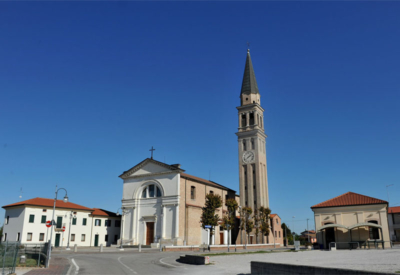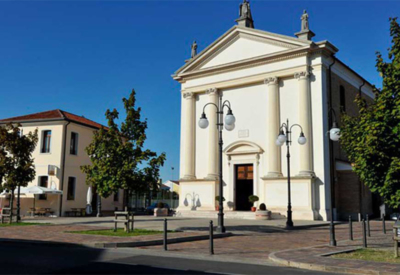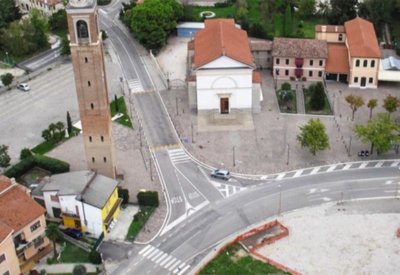CAMPOLONGO MAGGIORE
The first traces of life in the Campolongo Maggiore area date back to the 12th century B.C.E., as evidenced by recent archaeological findings. At the time there was a village of about 6 hectares surrounded by an embankment where people dedicated to livestock farming and primitive agriculture lived. This phase of early history was followed by that of the Veneri, across the whole of the north-east from the 9th to the 2nd century B.C.E. that left considerable traces of the presence of a people very attached to the cult of the dead. In this period there was a strong connection between the Paleo-Venetian ancestors and the Greek world, with Este, with Adria and with Padua, on which they were administratively dependent. The Paduans also came to the rescue of the villages and defeated the Spartans, during the invasion in 302 B.C.E. Later the Romans arrived to settle the many internecine wars.
All the materials that are relics of this period (agricultural tools, various shapes and sizes of loom weights, knives, door hinges, locks, keys, coins, amphorae, bowls and black pottery with floral decorations) are preserved in the Bojon Antiquarium.
All the villages disappeared when their populations fled to from the mainland to the lagoon during the Barbarian invasions. News of them began to emerge again around the 9th century when the area became part of the Court of Sacco or Saccisica and belonged to the Bishop of Padua.
Around the 13th century, as the Venetian Republic had extended its dominion over the sea it then began to conquer the mainland and Campolongo area became the scene of battles with Padua.
The Venetian Republic began to build a series of ‘tagli’ (canals) that had a serious effect on the already precarious equilibrium between the water and the land. Between 1488 and 1507 the building of Brenta Nuovo or Brentone, which diverted the Brenta River from Dolo to Conche, through Bojon and Corte, running between the provincial road and the railway, immediately proved inadequate.
Following the diversion of the Brenta River and the silting up of the Cornio, the Campolongo area was plagued by continuous flooding, which was only partly solved by the advent of steam-powered water pumps.
With the Napoleonic Kingdom of Italy, in 1806, Liettoli, Bojon and Campolongo became three small municipalities in the department of Brenta (the modern-day province of Padua) and were transferred to the department of the Adriatic (today’s metropolitan City of Venice) the following year. When the Kingdom of Lombardy – Venetia kingdom took over as a ruling power in 1815 the three towns were merged into the Municipality of Campolongo Maggiore.
Worth Visiting
Campolongo church, dedicated to Saints Felice and Fortunato
The 16th century Bojon parish church dedicated to S. Nicolo Vescovo. It has an interesting 15th century Romanesque bell tower.
Chiesa di Liettoli, a church built in 1836. It was built in the same area as the previous one, but with a different orientation and was restored in 1884. There is a very interesting altarpiece by Gabriele Caliari (1568-1631), son of the great Paolo, known as ‘il Veronese’.
An archaeological exhibition in the hamlet of Santa Maria Assunta, curated by the “Mino Meduaco” local archaeological society.
The Antiquarium in the hamlet of Bojon



